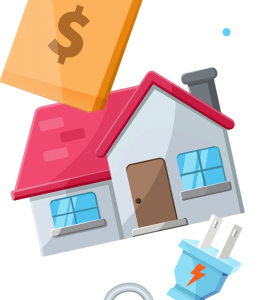4-00 Chapter 4: Building Your $100,000 Portfolio
Now that you are familiar with some of the different order types and made a few trades of your own, it is time to start working on building a proper Portfolio. Whether your first Portfolio is $500, $25,000 or even $100,000, the same principles apply – the only difference is how many of each stock you can afford.
At the end of Chapter 3, we talked about setting goals, and that is where building your first portfolio comes into play. Instead of just “picking stocks”, think about your real investing goals, and what you want to get out of your investments as a whole. This will help guide your portfolio building strategy, where you will begin to identify what you want your final portfolio to look like, what kinds of investments you need to find to achieve that goal, and finally start to choose individual stocks or funds to fill those roles.

This allows your portfolio to evolve according to your overall plan, instead of just existing as a collection of stocks you picked. Then when you start to actively manage your portfolio, your limit and stop orders will do the “heavy lifting”, and you can focus on long-term research and updating your overall goals.
Examples of Portfolio Design
Here are a few examples, which we also discussed in Chapter 3. These examples are not our direct investment advice, but just a general idea of how to think about your portfolio:
Putting Your Money To Work
In this scenario, you have saved up your first $1000 for an emergency fund and want to put your money to work to earn a higher return than your savings account. You plan to keep building your savings too by saving a few hundred dollars extra every month. While you want to keep your “Emergency Fund” safe, going forward you want your additional savings to go to some higher-risk, higher-reward options.
Your portfolio might look something like:
- At least $1000 invested in stable dividend stocks, like utility companies. As your portfolio grows, making sure at least 25% (and a minimum of $1000) is in these low-risk, stable growth companies with a dividend
- After that first $1000, you might invest ¼ in tech stocks, ¼ in healthcare stocks, ¼ in biotechnology, or other high-growth areas to try to maximize your return (and take higher risks)

Preparing For A Major Life Change

In this scenario, you are saving up for a down payment on a house. You are looking for growth, but you do not want to lose your investment and delay making a down payment forever. In this case, your portfolio might look something like:
- 50% invested in index funds, so your investment will grow at the same speed as the market as a whole.
- 25% in residential construction companies – their stock price will go up if homes get more expensive, so you want your savings to grow to match it.
- The remaining 25% as “fun money”, investing in companies you have a good feeling about their growth potential (but with “stop orders” in place in a case you’re wrong!).
In both cases, before you start thinking about what stocks you want to pick, you set a goal and how much risk you are willing to take. Then you define the roles that you want each investment to play in your portfolio – which narrows down all 20,000 stocks in the market down to something specific to focus on.
The rest of this chapter will focus on understanding your risk tolerance, and some investing advice from the experts.